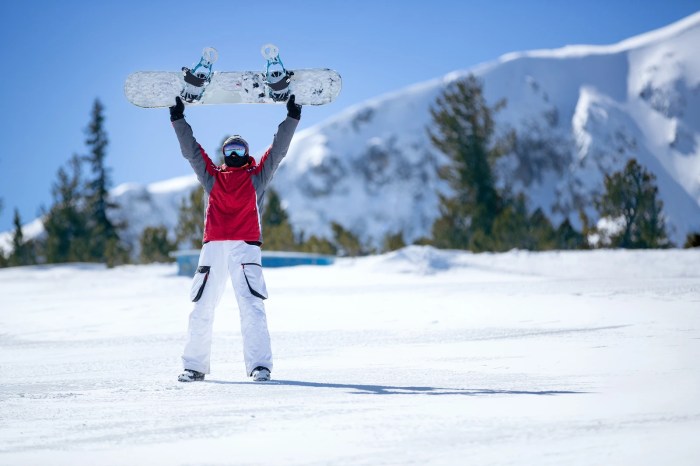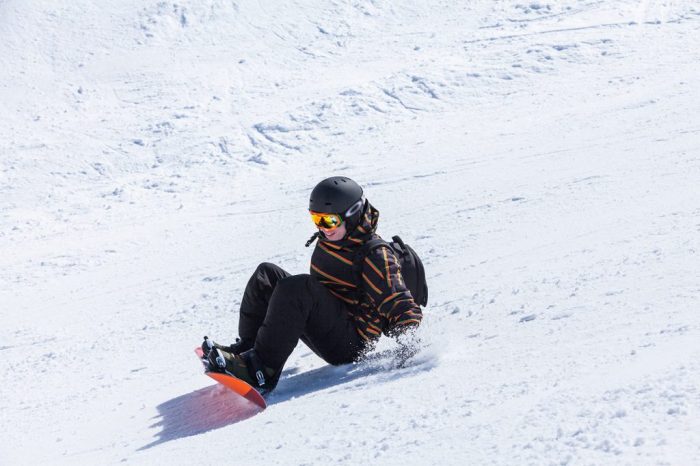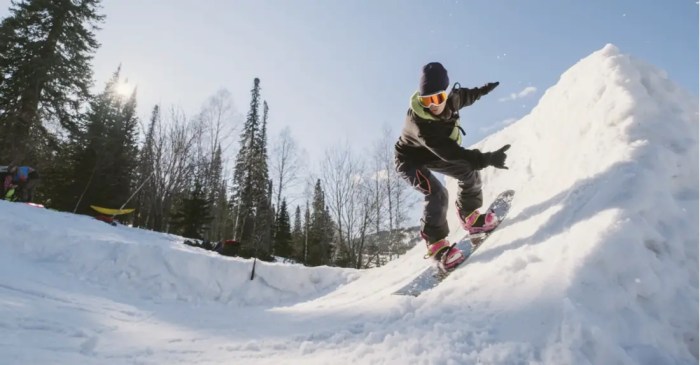Embark on your snowboarding journey with How to Snowboard: 8 Tips for Beginners, delving into essential techniques and safety measures to enhance your skills on the snow-covered mountains.
Explore the fundamentals of snowboarding, from equipment essentials to mastering turning techniques, as you navigate through this exhilarating sport.
The Basics of Snowboarding

When it comes to learning how to snowboard, mastering the basics is crucial. From your stance to the equipment you use, understanding these fundamental elements will set you up for success on the slopes.
Stance and Posture
Maintaining the correct stance and posture is essential for snowboarding. Your feet should be shoulder-width apart, with your knees slightly bent to provide stability and control. Keep your weight centered over the board to ensure proper balance while riding.
Equipment for Beginners
As a beginner snowboarder, you will need a few key pieces of equipment to get started. This includes a snowboard, boots, bindings, a helmet, and appropriate clothing for the cold weather. Make sure your gear fits properly and is in good condition before hitting the slopes.
Balance and Weight Distribution
Balance and weight distribution play a significant role in snowboarding. Shift your weight to initiate turns and control your speed. Keeping your weight evenly distributed between your feet will help you maintain stability and maneuverability on the snow.
Bindings and Boots
Bindings and boots are essential components of your snowboarding setup. Bindings secure your boots to the board, allowing you to control your movements and steer the board. Boots provide support and comfort while riding, ensuring a snug fit for optimal performance on the snow.
Learning Techniques for Beginners

When first starting out in snowboarding, mastering the basic techniques is essential to build a strong foundation. Here are some tips to help beginners navigate the slopes with confidence.
Mastering Turning on a Snowboard
- Shift your weight to your toes or heels to initiate turns.
- Practice making S-turns to control your speed and direction.
- Keep your knees bent and your body aligned with your board.
- Look in the direction you want to go to help guide your turns.
Controlling Speed on a Snowboard
- Use your edges to carve and control your speed.
- Lean back slightly to slow down and lean forward to speed up.
- Practice using the “falling leaf” technique to control your speed on steeper slopes.
Navigating Different Types of Terrain
- On slopes, use your edges to carve smooth turns.
- On flat areas, maintain a comfortable speed and keep your weight centered.
- Practice riding switch (with your non-dominant foot forward) to improve your overall control.
Getting Up After Falling
- Position your snowboard perpendicular to the slope to prevent sliding.
- Use your hands to push yourself up while keeping your weight on your uphill edge.
- Once standing, point your board downhill and continue riding.
Safety Tips and Precautions

When hitting the slopes for a snowboarding session, safety should always be a top priority. Proper preparation and awareness can help prevent accidents and ensure an enjoyable experience on the mountain.
Wearing Appropriate Safety Gear
- Always wear a helmet to protect your head from injuries in case of falls or collisions.
- Invest in quality snowboarding goggles to shield your eyes from snow, wind, and harmful UV rays.
- Use wrist guards to reduce the risk of wrist injuries, which are common among beginners.
- Padded shorts and impact vests can provide added protection for your hips, tailbone, and torso.
Identifying and Avoiding Hazards
- Be aware of your surroundings and watch out for icy patches, rocks, trees, and other obstacles.
- Avoid areas with high avalanche risk and always obey warning signs and closures.
- Stay on designated trails and avoid venturing into off-limit areas to prevent accidents.
Etiquette and Rules on Crowded Mountains
- Respect the right of way and yield to other riders when merging onto a trail or overtaking them.
- Avoid stopping in the middle of a trail where you might obstruct other snowboarders’ path.
- Follow the mountain’s code of conduct, which typically includes rules like skiing in control and staying clear of closed areas.
Staying Warm and Hydrated
- Dress in layers to regulate your body temperature and stay comfortable throughout the day.
- Hydrate frequently by carrying a water bottle or hydration pack to prevent dehydration at high altitudes.
- Pack high-energy snacks like nuts, granola bars, or fruits to fuel your body and maintain energy levels.
Wrap-Up

As we wrap up our discussion on How to Snowboard: 8 Tips for Beginners, remember to practice, stay safe, and enjoy the thrill of gliding down the slopes with newfound confidence and expertise.